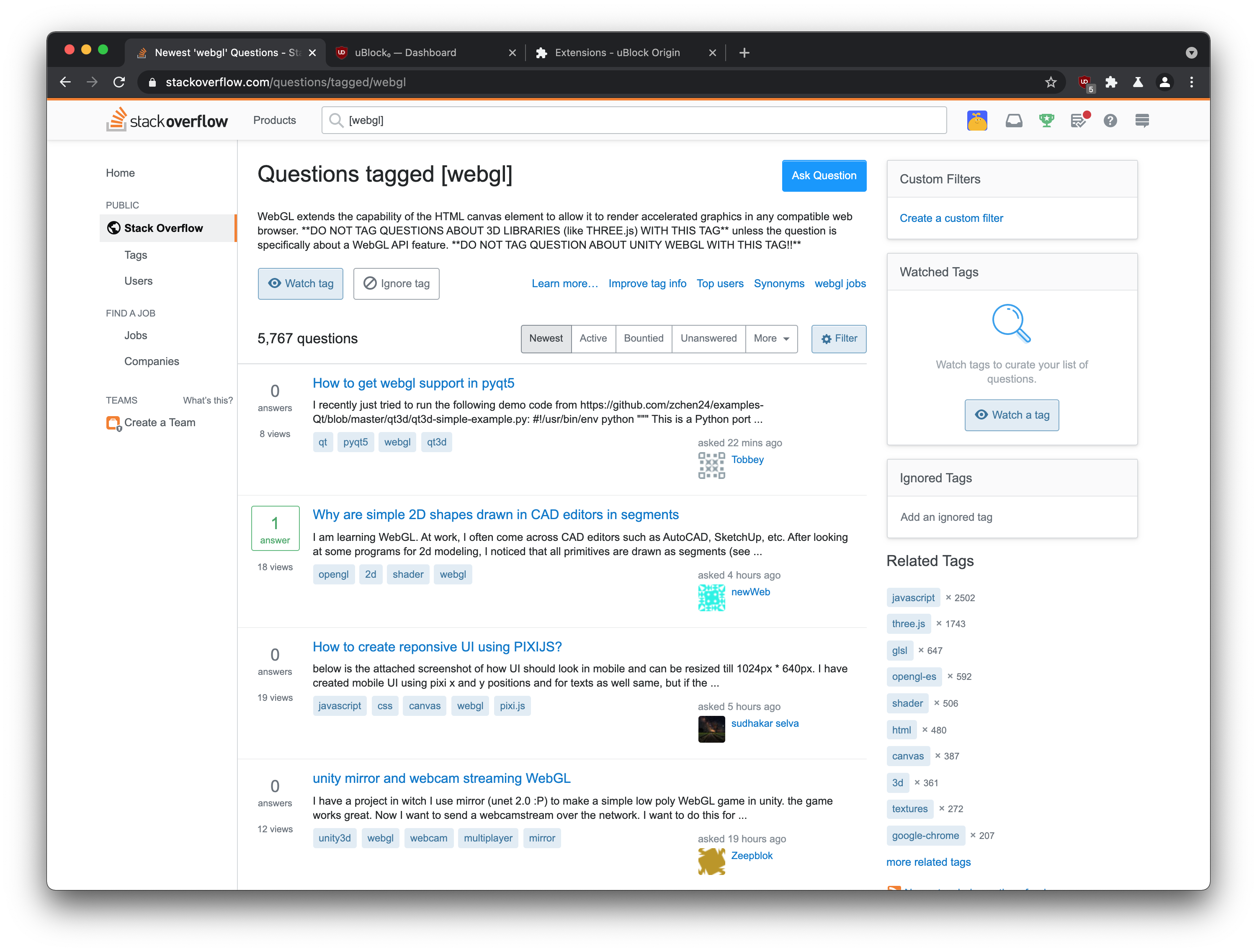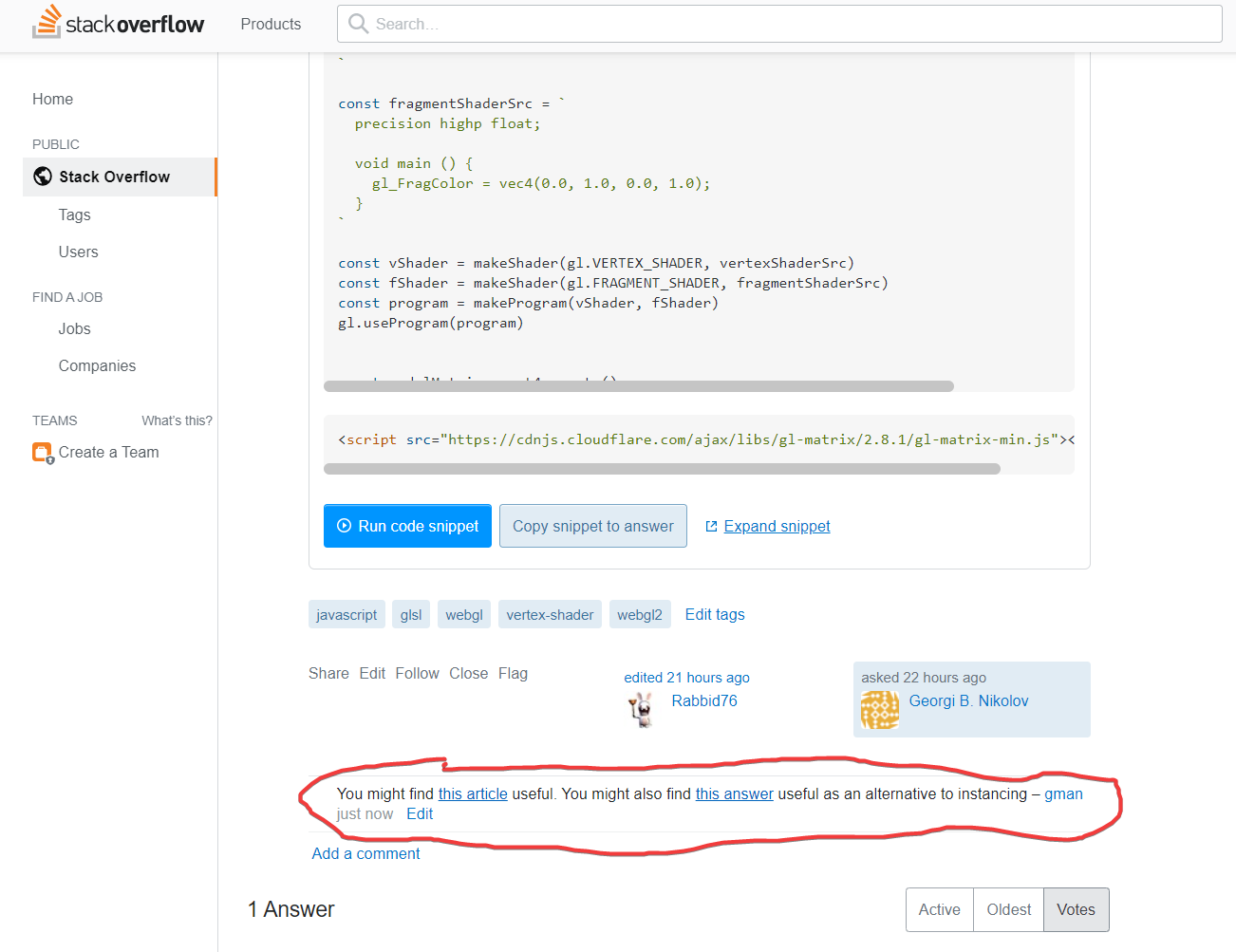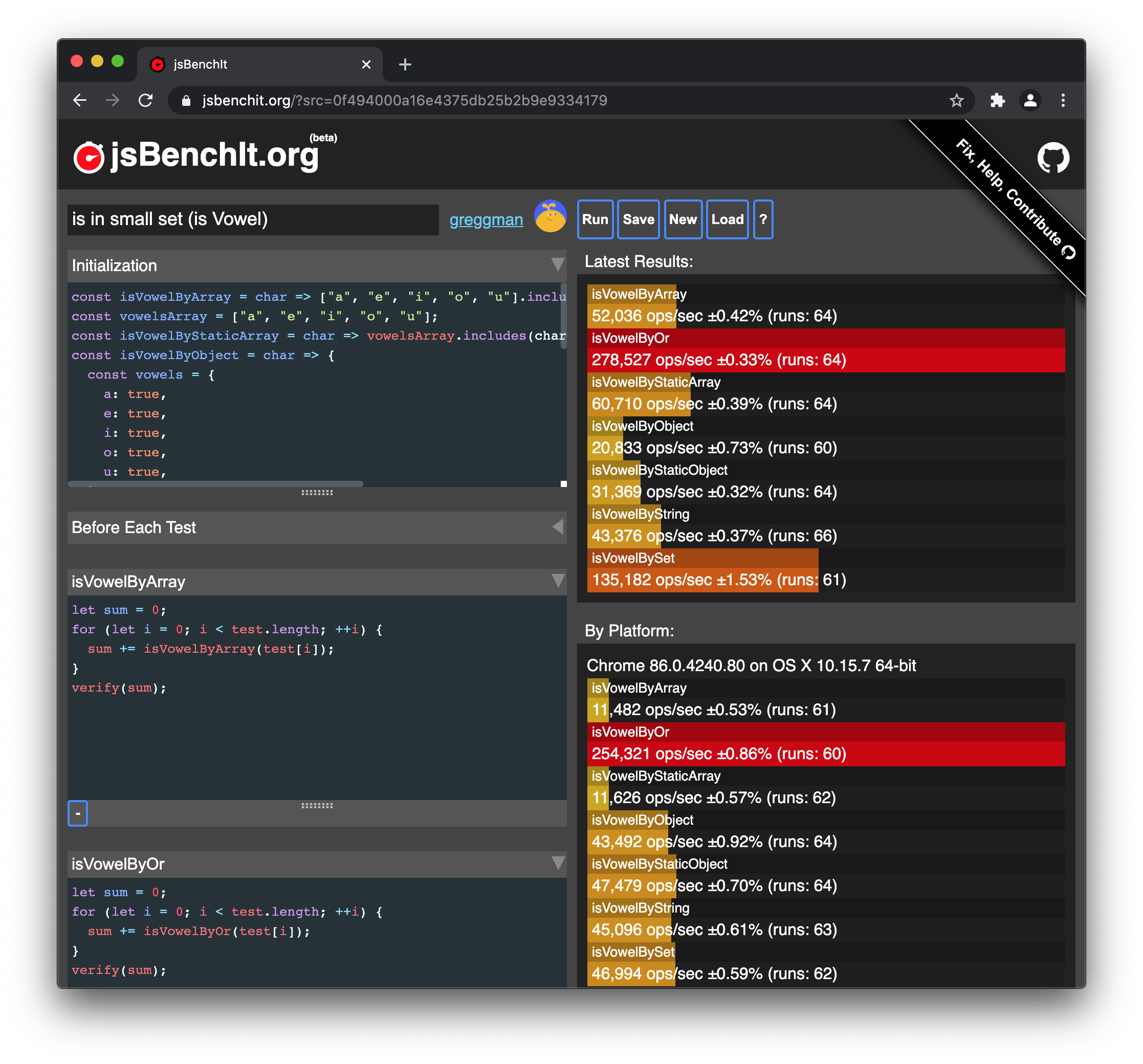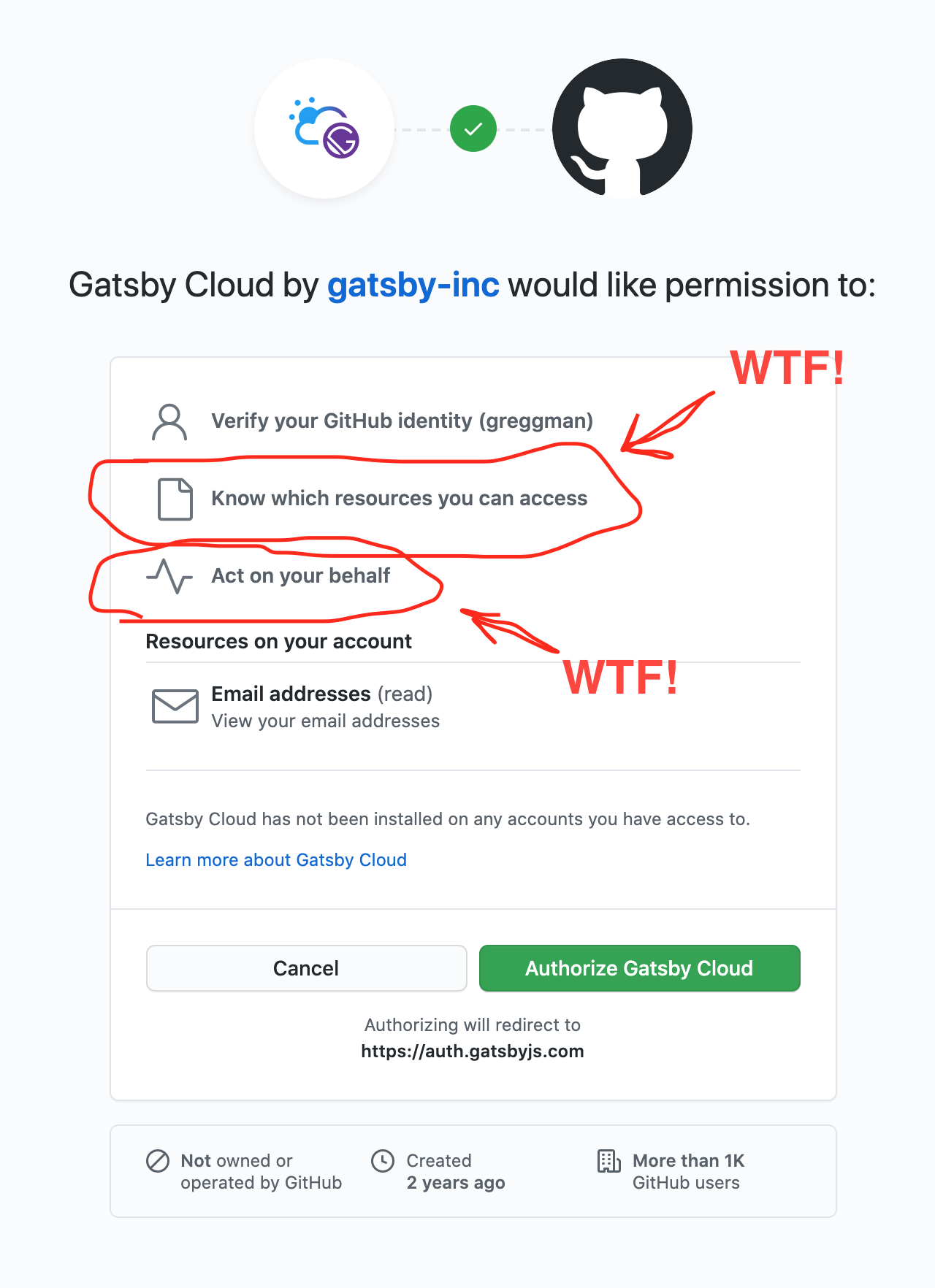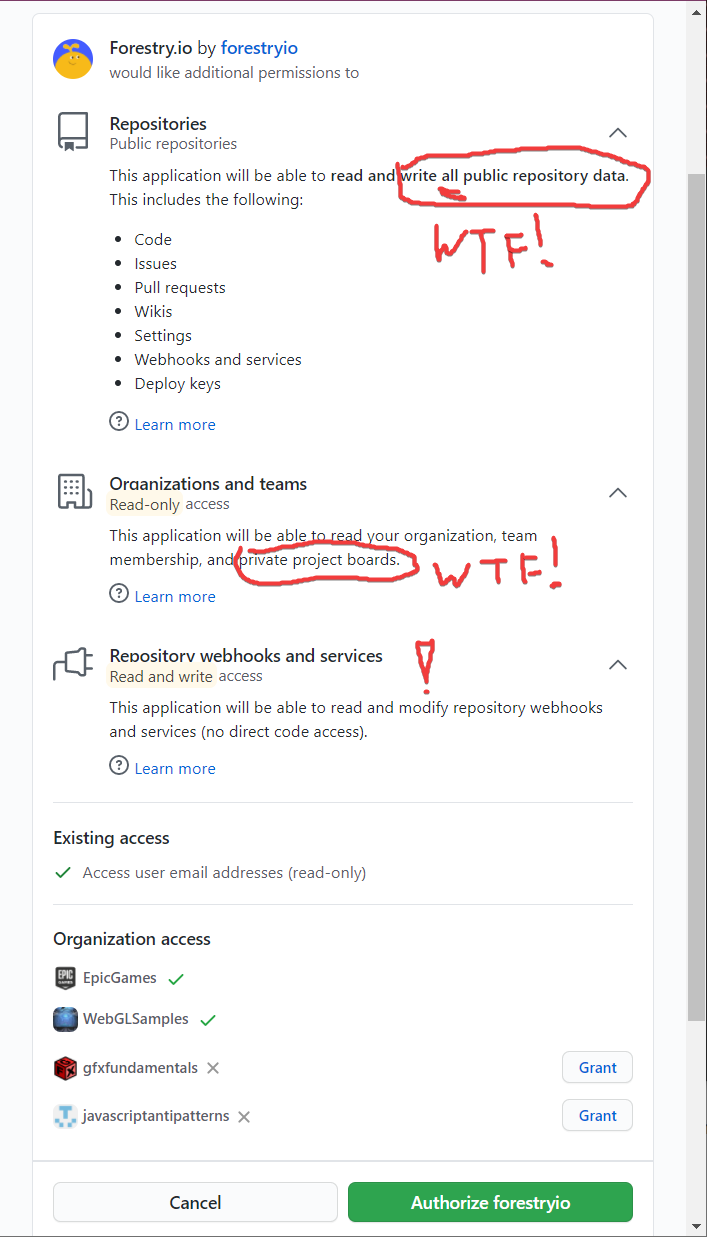I'm a fan (and a sponsor) of Dear ImGUI.
I've written a couple of previous articles on it including
this one and
this one
Lately I thought, I wonder what it would be like to try to make an
HTML library that followed a similar style of API.
NOTE: This is not Dear ImGUI running in JavaScript. For that see
this repo. The difference
is most ImGUI libraries render their own text and graphics. More specifically
they generate arrays of vertex positions, texture coordinates, and
vertex colors for the glyphs and other lines and rectangles for your
UI. You draw each array of vertices using whatever method you feel like.
(WebGL, OpenGL, Vulkan, DirectX, Unreal, Unity, etc...)
This experiment is instead actually using HTML elements like <div>
<input type="text">, <input type="range">, <button> etc...
This has pluses and minus.
The minus is it's likely not as fast as Dear ImGUI (or other ImGUI)
libraries, especially if you've got a complex UI that updates at 60fps?
On the other hand it might actually be faster for many use cases. See below
The pluses are
If you don't update anything in the UI it doesn't use any CPU
In Dear ImGUI you must re-render the UI every frame if you
non UI stuff (game/app) changes.
Styling is free (use CSS)
Most ImGUI libraries have very minimal styling features but here
we get all of CSS to style.
Layout is free (word wrap, sizing, grids, spacing
Most layout happen outside the library based on css. In Dear ImGUI
all layout happens every frame by the library. Here, if we want
4 elements side by side we just surround them with flex or grid
and the browser handles layout.
Supports all of Unicode
Most ImGUI libraries only handle a small number of glyphs.
They may or may not handle colored emoji 🍎🍐🍇🐯🐻🦁🦁😉🤣
or Japanese(日本語), Korean(한국어), Chinese(汉语). I don't think
any handle right to left languages like Arabic(عربي).
Supports more fonts
This might not be fair, I'm sure Dear ImGUI can use more than one
font. The thing is it's likely cumbersome, especially multiple
sizes in multiple styles where as
the
browser
excels
at this.
Supports Language Input
Many ImGUI libraries have issues with language input. Because they
are rendering their own text they have 2nd class support for
complex input and input method editors.
Supports Accessability
Most ImGUI libraries are not very accessability friendly. Because
they just ultimately render pixels there is not much for an accessability
feature to look at. With HTML, it's far easier for the browser
and or OS to look into the content of the elements.
Automatic zoom support
The browser zooms. In Dear ImGUI you'd have to manually code zooming support?
Automatic HD-DPI support
The browser will render text and most other widgets taking into
account the user's device's HD-DPI features.
In general, less code than Dear ImGUI should be executing if you are not updating
1000s of values per frame.
Consider, Dear ImGUI is mostly stateless AFAIK. That means things like word
wrapping a string or computing the size of column might need to be done on
every render. In ImHUI's case, that's handled by the browser and if the contents
of an element has not changed much of that is cached.
Thoughts so far
So, what have I noticed so far...
Simpler to get your data in/out
What's nice about the ImGUI style of stateless UI is that you don't have to setup
event handlers nor really marshall data in and out of UI widgets.
Consider standard JavaScript. If you have an <input type="text"> you probably have
code something like this
const elem = document.createElement('input');
elem.type = 'text';
elem.addEventListener('input', (e) => {
someObject.someProperty = elem.value;
});You'd also need someway to update the element if the value changes
// when someObject.someProperty changes
elem.value = someObject.someProperty;
You now need some system for tracking when you update someObject.someProperty.
React makes this sightly easier. It handles the updating. It doesn't handle
the getting.
function MyTextInput() {
return {
<input
value={someObject.someProperty}
onChange={function(e) { someObject.someProperty = this.value; }>
}
}Of course that faux react code above won't work. You need to use state or some other solution
so that react knows to re-render when you change someObject.someProperty.
function MyTextInput() {
const [value, setValue] = useState(someObject.someProperty);
return {
<input
value={value}
onChange={function(e) { setValue(this.value); }>
}
}So now React will, um, react to the state changing but it won't react
to someObject.someProperty changing, like say if you selected a different
object. So you have to add more code. The code above also provides no way
to get the data back into someObject.someProperty so you have to add more
code.
In C++ ImGUI style you'd do one of these
// pass the value in, get the new value out
someObject.someProperty = ImGUI::textInput(someObject.someProperty);
or
// pass by reference. updates automatically
ImGUI::textInput(someObject.someProperty);
JavaScript doesn't support passing by reference so we can't do the 2nd style, OR,
we could pass in some getter/setter pair to let the code change
values.
// pass the value in, get the new value out (still works in JS)
someObject.someProperty = textInput(someObject.someProperty);
// use a getter/setter generator
textInput(gs(someObject, 'someProperty'));
Where gs is defined something like
function gs(obj, propertyName) {
return {
get() { return obj[propertyName]; },
set(v) { obj[propertyName] = v; },
};
}In any case, it's decidedly simpler than either vanilla JS or React. There is no other code to get
the new value from the UI back to your data storage. It just happens.
Less Flexible?
I'm not sure how to describe this. Basically I notice all the HTML/CSS features I'm throwing away
using ImGUI because I know what HTML elements I'm creating underneath.
Consider the text function. It just takes a string and adds a row to the current UI
ImGUI::text('this text appears in a row by itself');There's no way to set a className. There's no way to choose span instead of div or
sub or sup or h1 etc..
Looking through the ImGUI code I see lots of stateful functions to help this along
so (making up an example) one solution is some function which sets which type will be
created
ImGUI::TextElement('div')
ImGUI::text('this text is put in a div');
ImGUI::text('this text is put in a div too');
ImGUI::TextElement('span')
ImGUI::text('this text is put in a span');The same is true for which class name to use or adding on styles etc.
I see those littered throughout the ImGUI examples. As another example
ImGUI::text('this text is on its own line');
ImGUI::text('this text can is not'); ImGui::SameLine();Is that a plus? A Minus? Should I add more optional parameters to functions
ImHUI.text(msg: string, className?: string, type?: string)
or
ImGUI.text(msg: string, attr: Record<string, any>)
where you could do something like
ImGUI.text("hello world", {className: 'glow', style: {color: 'red'}});I'm not yet sure what's the best direction here.
Higher level = Easier to Use
One thing I've noticed is that, at least with Dear ImGUI, more things are decided for you.
Or maybe that's another way of saying Dear ImGUI is a higher level library than React or Vanilla JS/HTML.
As a simple example
ImGUI::sliderFloat("Degrees", myFloatVariable, -360, +360);Effectively represents 4 separate concepts
- A label ("degrees") probably made with a
<div>
- A slider. In HTML made with
<input type="range">
- A number display. In this case probably a separate
<div>
- A container for all 3 of those pieces.
So, is ImGUI actually simpler than HTML or is it just the fact that it has
higher level components?
In other words, to do that with raw HTML requires creating 4 elements,
childing the first 3 into one of them, responding to input events,
updating the number display when an input event arrives. Updating
both the number display and the <input> element's value if the value
changes externally to the UI widgets.
But, if I had existing higher level UI components that already handled is that enough
to make things easier? Meaning how much of Dear ImGUI's ease of use comes
from its paradigm and how much from a large library of higher level widgets?
This is kind of like comparing programming languages. For given language, how much of
the perceived benefit comes from the language itself and how much from the standard
libraries or common environment it runs in.
Notes in implementation
getter setters vs direct assignment
ImGUI uses C++ ability to pass by reference. JavaScript has no ability to pass by reference.
In other words in C++ I can do this
void multBy2(int& v) {
v *= 2;
}
int foo = 123;
multBy2(foo);
cout << foo; // prints 246There is no way to do this in JavaScript.
Following the Dear ImGUI API I first tried to work around this by requiring
you pass in an getter-setter like this
var foo = 123;
var fooGetterSetter = {
get() { return foo; }
set(v) { foo = v; }
};which you could then use like this
// slider that goes from 0 to 200
ImHUI.sliderFloat("Some Value", fooGetterSetter, 0, 200);Of course if the point of using one of these libraries is ease of use then
it sucks to have to make getter-setters.
I thought maybe I could make getter setter generators like the one gs shown above.
It means for the easiest usage you're required to use objects so instead of bare foo
you'd do something like
const data = {
foo: 123,
};
...
// slider that goes from 0 to 200
ImHUI.sliderFloat("Some Value", gs(data, 'foo'), 0, 200);That has 2 problems though. One is that it can't be type checked because you have
to pass in a string to gs(object: Object, propertyName: string).
The other is it's effectively generating a new getter-setter on every
invocation. To put it another way, while the easy to type code looks like the line
just above, the performant code would require creating a getter-setter at init time like
this
const data = {
foo: 123,
};
const fooGetterSetter = gs(data, 'foo');
...
// slider that goes from 0 to 200
ImHUI.sliderFloat("Some Value", fooGetterSetter, 0, 200);I could probably make some function that generates getters/setters for all properties but that
also sounds yuck as it removes you from your data.
const data = {
foo: 123,
};
const dataGetterSetters = generateGetterSetters(data)
...
// slider that goes from 0 to 200
ImHUI.sliderFloat("Some Value", dataGetterSetter.foo, 0, 200);Another solution would be to require using an object and then make all the ImHUI functions
take an object and a property name as in
// slider that goes from 0 to 200
ImHUI.sliderFloat("Some Value", data, 'foo', 0, 200);That has the same issue though that because you're passing in a property name by
string it's error prone and types can't be checked.
So, at least at the moment, I've ended up changing it so you pass in the value
and it passes back a new one
// slider that goes from 0 to 200
foo = ImHUI.sliderFloat("Some Value", foo, 0, 200);
// or
// slider that goes from 0 to 200
data.foo = ImHUI.sliderFloat("Some Value", data.foo, 0, 200);It's far more performant than using getter-setters, on top of being more performant
than generating getter-setters. Further it's type safe. Eslint or TypeScript can both
warn you about non-existing properties and possibly type mis-matches.
Figuring out the smallest building blocks
The 3rd widget I created was the sliderFloat which as I pointed out above
consists of 4 elements, a div for the label, a div for the displayed value,
an input[type=range] for the slider, and a container to arrange them.
When I first implemented it I made a class that manages all 4 elements.
But later I realized each of those 4 elements is useful on its own so the
current implementation is just nested ImHUI calls. A sliderFloat is
function slideFloat(label: string, value: number, min: number = 0, max: number = 1) {
beginWrapper('slider-float');
value = sliderFloatNode(value, min, max);
text(value.toFixed(2));
text(prompt);
endWrapper();
return value;
}The question for me is, what are the smallest building blocks?
For example a draggable window is currently hand coded as a combination of parts.
There's the outer div, it's scalable. There's the title bar for the window, it
has the text for the title and it's draggable to move the window around.
Can I separate those so a window is built from these lower-level parts?
That's something to explore.
Diagrams, Images, Graphs
You can see in the current live example I put in a version of ImGUI::plotLines
which takes a list of values and plots them as a 2D line. The current implementation
creates a 2D canvas using a canvasNode which returns a Canvas2DRenderingContext.
In other words, if you want to draw something live you can build your own widget
like this
function circleGraph(zeroToOne: number) {
const ctx = canvasNode();
const {width, height} = ctx.canvas;
const radius = Math.min(width, height);
ctx.beginPath();
ctx.arc(width /2, height / 2, radius, 0, Math.PI * 2 * zeroToOne);
ctx.fill();
}The canvas will be auto-sized to fit its container so you just draw stuff on it.
The thing is, the canvas 2D api is not that fast. At what point should I try to use WebGL
or let you use WebGL. If I use WebGL there's the context limit issues. Just something
to think about. Given the way ImGUIs work if you have 1000 lines to draw then every time
the UI updates you have to draw all 1000 lines. In C++ ImGUI that's just inserting
some data into the vertex buffers being generated, but in JavaScript, with Canvas 2D,
it's doing a lot more work to call into the Canvas2D API.
It's something to explore.
So far it's just an Experiment
I have no idea where this is going. I don't have any projects that need a GUI like this
at the moment but maybe if I can get it into something I think is kind of stable I'd
consider using it over something like dat.gui which
is probably far and way the most common UI library for WebGL visualizations.
